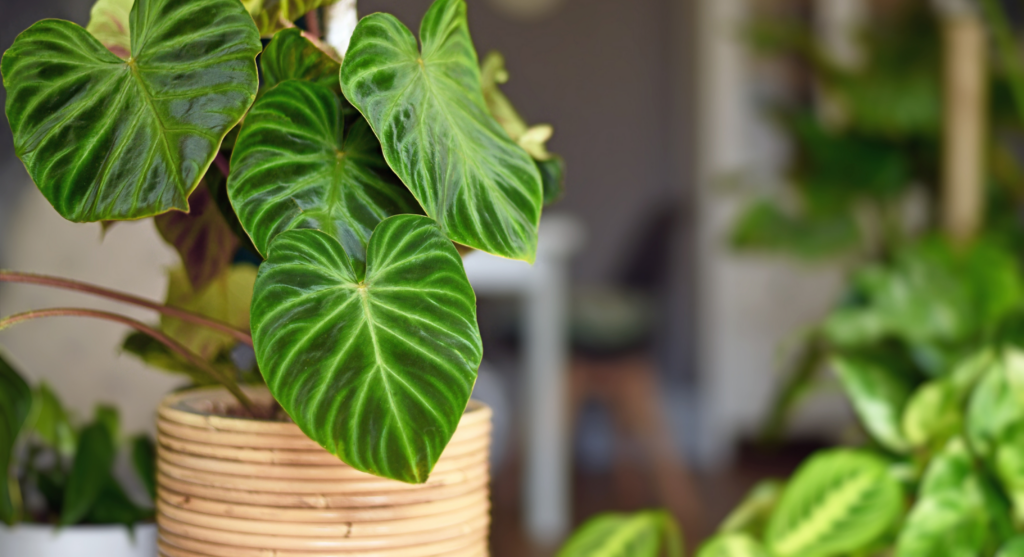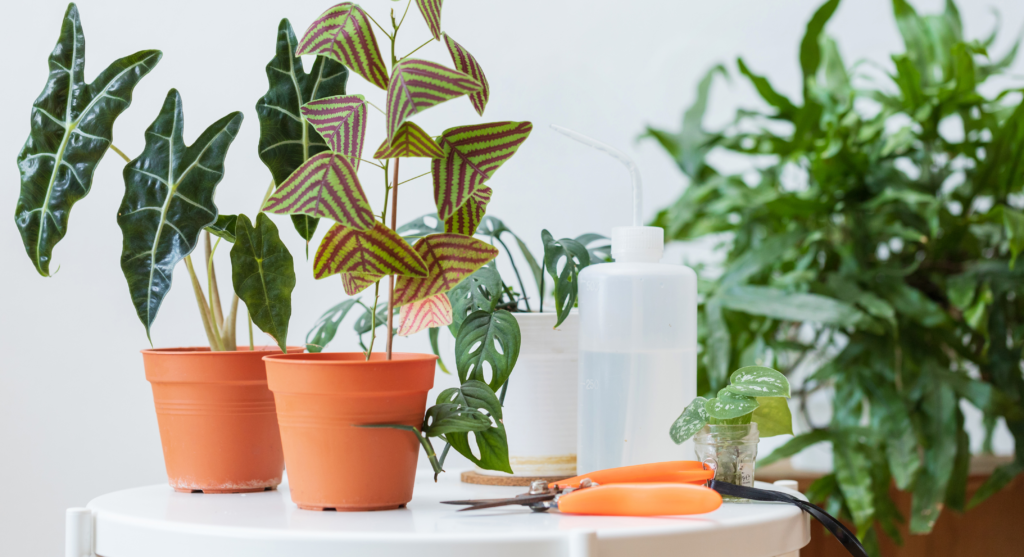Having plants at home not only beautifies the environment, but also improves air quality and provides more tranquility to the home. If you are just starting out in the world of gardening, learning how to care for houseplants can be a rewarding experience. In this article, you will learn the essential tips to ensure that your plants grow healthy and beautiful. Follow our suggestions to create a home garden that is always well-kept.
Choosing the Right Plants
Before you begin, it’s crucial to choose the plants that best suit your environment. This step ensures that they adapt well to the space and grow healthily. Some plants thrive in low-light locations, while others prefer direct sunlight. If you are a beginner, plants such as the Sword of St. George, the Cactus and the Pilea are great options.
Houseplants: Additional tips for choosing plants:
When selecting your plants, also consider the size of the room. Larger plants, such as the Ficus and the Areca Palm, are ideal for large rooms or spacious offices. Smaller plants, such as Succulents or Cacti, fit well on shelves or desks.
If you choose correctly, your plants will grow healthily and contribute to the beauty of the environment.
Houseplants: Lighting – The Crucial Element for Plant Growth
Sunlight is essential for plant growth. However, each plant has its own light requirements. Some prefer direct sunlight, while others do better in shaded environments. To ensure optimal growth, consider the amount of natural light your home receives.
- Full sun plants: These need direct light for several hours, such as Sunflower and Alocasia.
- Partial shade plants: These prefer indirect light, such as Fern and Bromeliad.
- Full sun plants: These need indirect light, such as Fern and Bromeliad.
- Full sun plants: These need direct light for several hours, such as Sunflower and Alocasia.
Therefore, when choosing plants, observe the amount of light available in your home and make the right choice. If your home doesn’t provide enough light, consider using LED grow lights.

Watering: How and When to Water Your Plants
Watering plants correctly is one of the most delicate steps in caring for them. The amount of water needed varies according to the type of plant, the climate and the size of the pot. Here are some general guidelines:
- Plants that like dry soil: Like cacti, they need spaced watering.
- Plants that like moist soil: Like Ferns, they need more frequent watering.
Also, check if the pot has drainage holes. If the water doesn’t drain, the accumulation at the bottom can harm the roots. Never let the plant sit in water, as this can be fatal.
Instead of watering frequently, watch the soil and water only when it is dry. In more humid environments, such as bathrooms, plants may need less water since the air contains more moisture.
Fertilization: Nutrients for Plant Growth
Just like humans, plants also need nutrients to grow healthily. Fertilization plays an important role in this process. Use fertilizers that provide nitrogen, phosphorus, and potassium. Fertilize your plants during the spring and summer when they are actively growing.
During the fall and winter, plants usually go dormant. Therefore, it is not necessary to fertilize them during these months. This will prevent excess nutrients, which can harm their growth.
Also, when choosing fertilizers, prefer organic ones, such as worm castings or compost. They are better for the soil and the environment.
Houseplants: Pruning – Plant Care and Appearance
Pruning is essential to ensure that your plants remain beautiful and healthy. By removing dead or damaged parts, you encourage new growth. Some plants, such as violets and orchids, require regular pruning. For this procedure, always use sharp scissors to avoid damage.
When pruning, only remove damaged parts or those that do not contribute to the healthy growth of the plant. Avoid over-pruning, as this can stress the plant and harm its development.
Houseplants: Pest Control – Protecting Your Plants
Pests are a constant threat to those who care for houseplants. Inspect your plants regularly for signs of pests, such as spider mites, aphids, and mealybugs. If you find a problem, use natural solutions, such as neem oil, to combat the pests without harming the plant.
Pest control can also be done naturally, with natural predators, such as ladybugs, or with homemade insecticides. Use a mixture of garlic and mild soap diluted in water, for example, to eliminate pests.
This type of care will ensure the health of your plants, without compromising the environment or the natural cycle.
Houseplants: Specific Care for Popular Plant Types
Each type of plant has its own unique needs, so it’s important to understand how to care for each of them. Check out some specific care for popular plants:
- Succulents: They need little water and love direct sunlight.
- Orchids: They prefer humid environments, moderate watering and good ventilation.
- Bromeliads: They need indirect light and should be watered in the central rosette, not directly in the soil.
When choosing a plant, consider its specific light, humidity, and watering needs. This way, you ensure that it will grow strong and healthy, without any difficulties.

Houseplants: Transplanting – When to Change the Pot
As plants grow, they may need more space for their roots. Transplanting to a larger pot allows them to expand and continue developing. It is best to transplant when the roots begin to emerge from the drainage holes or when the soil appears compact and lacking in nutrients.
Choose a pot that is just a little larger than the current one to prevent the plant from becoming stressed by the extra space. Use a nutrient-rich potting soil and water thoroughly after transplanting.
Caring for houseplants can be challenging at first, but with patience and dedication, you will see your home transform into a green oasis. Remember to choose the right plants for your environment, water them properly, and provide them with the right nutrients. By following these tips, you will ensure healthy plants and a more beautiful and welcoming environment for your home.

